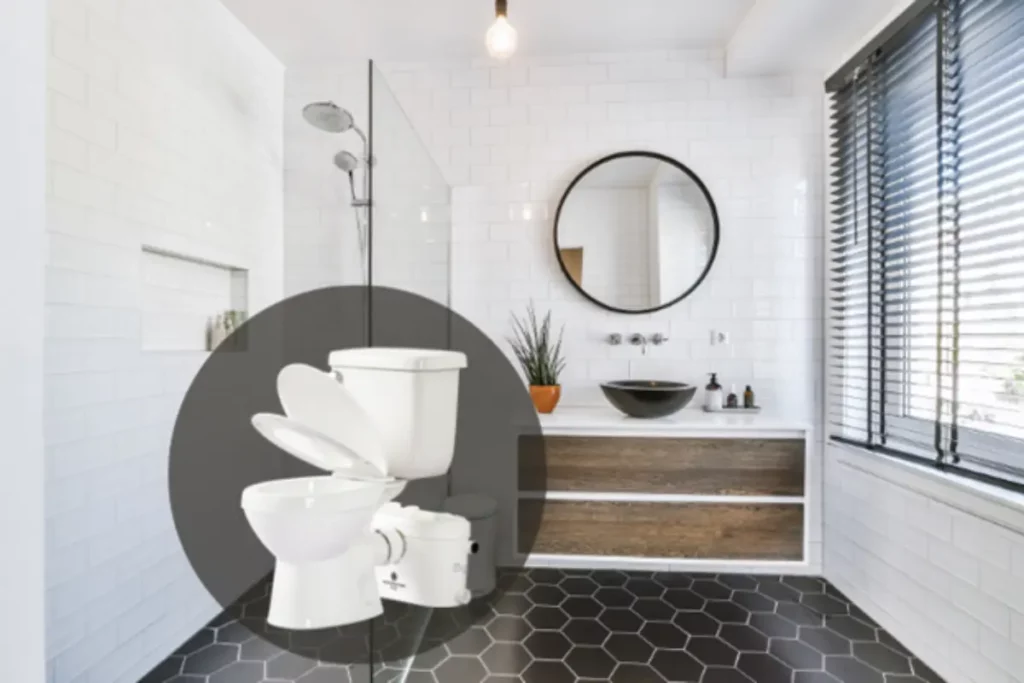Macerating toilets are an innovative solution for homes where traditional plumbing might not be feasible, such as in basements, attics, or additions far from the main sewage line. However, like any other household appliance, they can encounter issues.
Understanding how to troubleshoot and solve common problems with your macerating toilet can save time and avoid unnecessary stress. This comprehensive guide delves into the most frequent issues faced by homeowners and offers expert advice on how to address them effectively.
Know Your Macerating Toilet
Before addressing common problems, it’s vital to understand how a upflush toilet works. Unlike traditional toilets that rely on gravity, macerating toilets use a macerator and a pump to dispose of waste.
The macerator grinds solid waste and toilet paper into a fine slurry, which is then pumped through small-diameter pipes to the main sewer system. This mechanism allows for installation in areas without conventional plumbing.
Understanding this system is crucial for troubleshooting, as it operates differently from standard gravity-fed toilets, particularly in waste disposal and plumbing requirements.
Common Issues and Solutions
Clogs and Blockages
- Cause and Prevention: Clogging is a frequent issue, often due to non-flushable items or a build-up of waste in the macerator. Educating everyone in the household about what should not be flushed is essential. Items like sanitary products, wet wipes, and excessive toilet paper can easily cause blockages.
- Solution: To address clogging, first identify the cause. If it’s a non-flushable item, carefully removing it might solve the problem. Regular maintenance, such as checking for build-ups and cleaning the macerator, can prevent future clogs.
Motor and Electrical Problems
- Cause and Prevention: The motor is the heart of your macerating toilet. Electrical issues might be due to a tripped circuit breaker, a blown fuse, or motor burnout. Regular checks, including listening for unusual noises, can help catch these problems early. Keeping the area around the motor dry and ensuring that electrical connections are not exposed to moisture is vital.
- Solution: If the motor fails, consulting a professional is advised. Regular maintenance, such as checking for leaks and ensuring that electrical connections are secure, is key to preventing motor and electrical issues.
Odors and Leaks
- Cause and Prevention: Unpleasant odors or leaks are a sign that something is amiss with your macerating toilet. Leaks might occur due to loose connections or damaged seals. Odors could be a result of improper venting or a clog in the system. Regular checks for leaks and ensuring proper ventilation can mitigate these issues. It’s also important to clean and maintain the venting system to prevent blockages that can cause odors.
- Solution: Address leaks by tightening connections and replacing worn seals. For odors, ensure that the venting system is correctly installed and not blocked.
Pump Issues
- Cause and Prevention: The pump is crucial, especially in systems like upflush toilets. When malfunctioning, it can cause backups and overflows. Early detection of pump problems is vital, which includes watching for abnormal noises, slow waste removal, or failure to activate. Regular maintenance and checks can prevent these issues.
- Solution: For flushing system problems, it is recommended to consult a professional for accurate diagnosis and repair. Solutions may range from simple system resets and blockage clearance to more extensive repairs or pump replacement.
Maximizing Longevity and Performance
Maintaining your macerating toilet is key to its longevity and performance. Here are some essential maintenance practices:
- Regular Cleaning and Descaling: This prevents debris buildup and scaling, which can impair the toilet’s efficiency. Use appropriate cleaning agents and descaling products designed for macerating toilets to avoid damaging the system.
- Electrical Connection Checks: Regularly ensure that all electrical components are secure and in good condition. This includes checking the wiring and connections for any signs of wear or damage, which can lead to electrical failures.
- Macerator and Pump Maintenance: Regularly inspect these for blockages and signs of wear. The macerator’s blades should be kept sharp, and the pump should function smoothly. Any signs of dull blades or a struggling pump should be addressed immediately.
- Professional Inspections: Annual or bi-annual professional inspections can help identify potential issues before they become major problems. These inspections can be particularly beneficial in assessing the health of electrical components and the maceration system.
Conclusion: Mastering Macerating Toilet Maintenance
Macerating toilets are a fantastic solution for many homes, but they require informed maintenance and troubleshooting. By understanding the common issues such as clogs, motor or pump failures, and odor or leak problems, and by conducting regular maintenance, you can ensure that your macerating toilet continues to function efficiently.
Proactive care is the key, keep an eye on your system and don’t hesitate to seek professional help when necessary. With these comprehensive tips and resources, you’re well-equipped to tackle any challenges your macerating toilet might present, ensuring its longevity and efficient performance.


